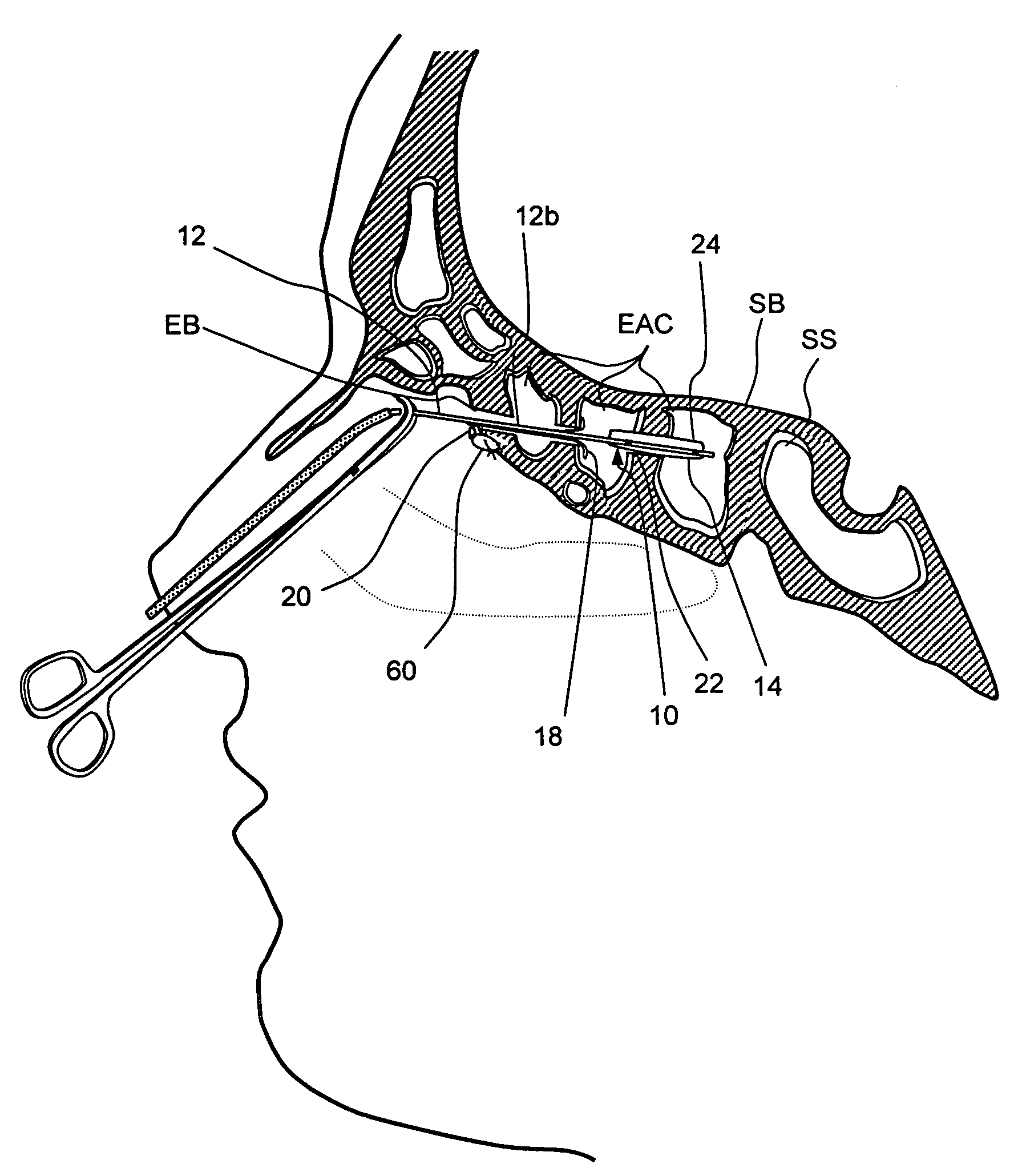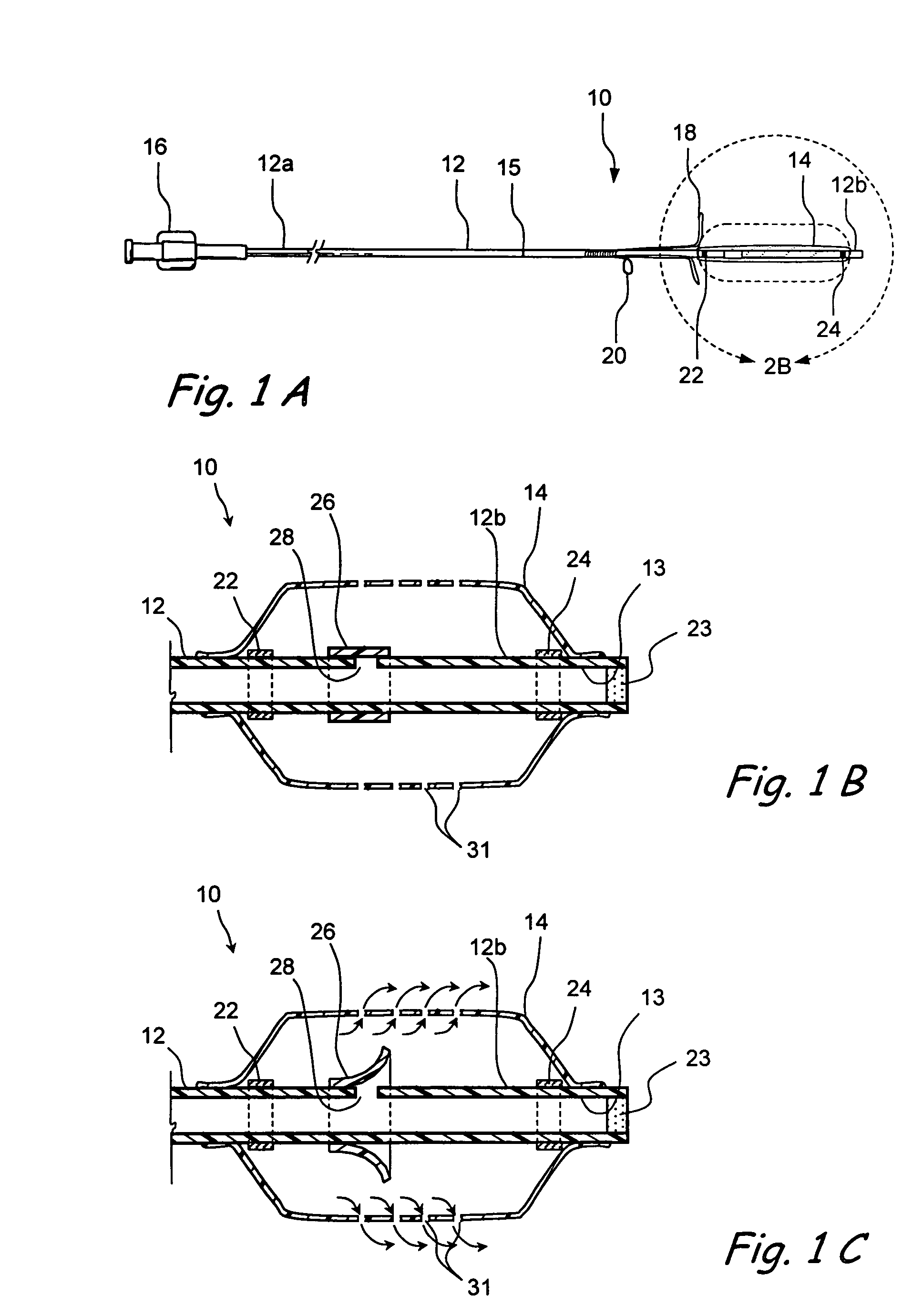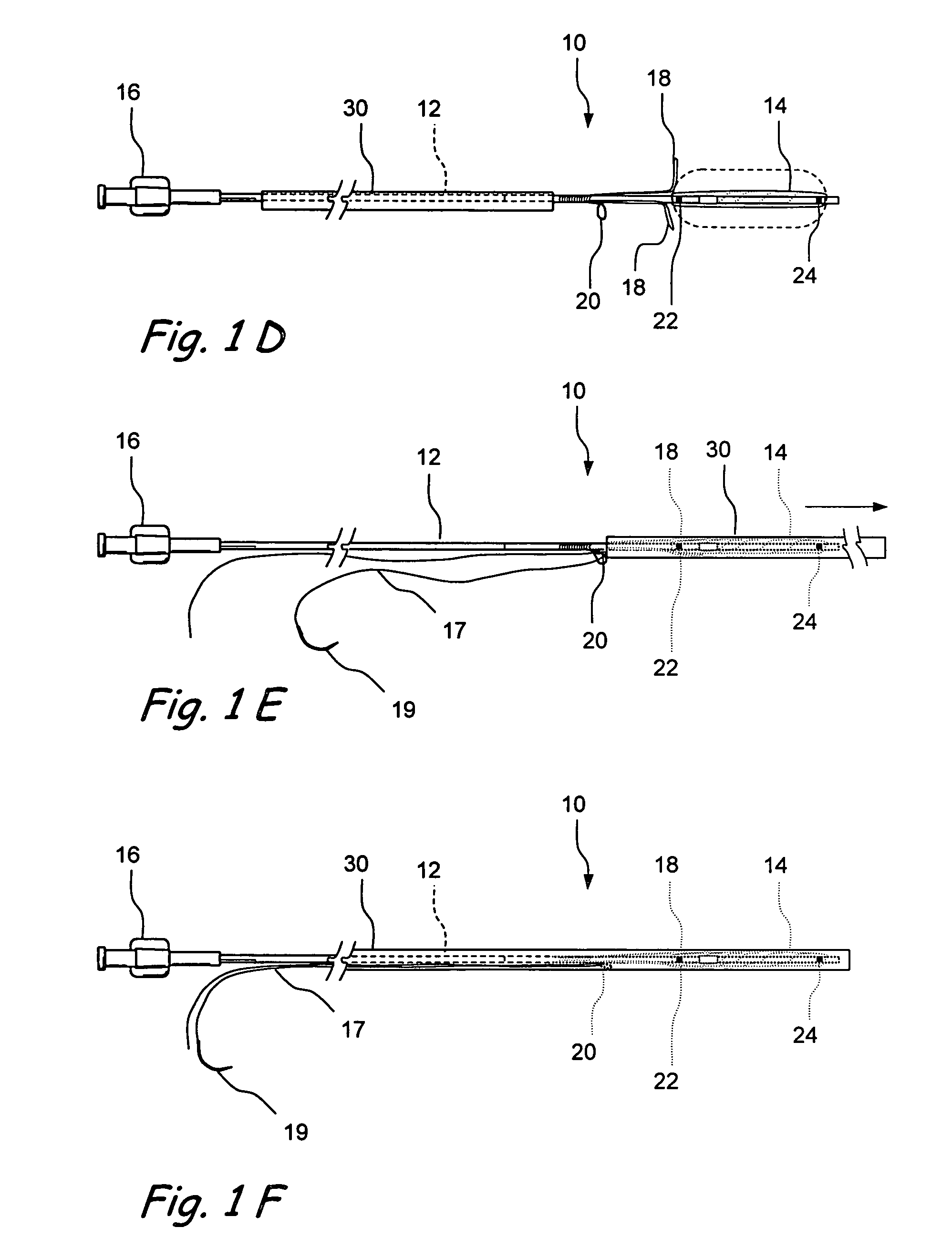Methods for treating ethmoid disease
a technology for ethmoid disease and treatment methods, applied in the field of substance delivery implants, can solve the problems of limited use of stents and spacers in relation to nose and sinus surgery, postsurgical management issues, and limited locations in frontal outflow tracts, so as to minimize tissue and underlying bone trauma, low profile, and low cost
- Summary
- Abstract
- Description
- Claims
- Application Information
AI Technical Summary
Benefits of technology
Problems solved by technology
Method used
Image
Examples
Embodiment Construction
[0090]The following detailed description, the accompanying drawings are intended to describe some, but not necessarily all, examples or embodiments of the invention. The contents of this detailed description do not limit the scope of the invention in any way.
[0091]FIGS. 1A-1E show one embodiment of an implantable substance delivery device and / or spacer 10 of the present invention. This device 10 comprises an elongate flexible catheter shaft 12 having a proximal portion 12a and a distal portion 12b which may be severed from one another at separation marker 15. The proximal shaft portion 12a and distal shaft portion 12b may be formed of the same or different materials and may have the same or different dimensions (e.g., diameter, wall thickness, etc.). For example, in some embodiments intended for implantation in paranasal sinuses or other ear, nose or throat locations, the proximal shaft portion 12a may be made of a suitable biocompatible material of sufficient column strength (e.g.,...
PUM
 Login to View More
Login to View More Abstract
Description
Claims
Application Information
 Login to View More
Login to View More - R&D
- Intellectual Property
- Life Sciences
- Materials
- Tech Scout
- Unparalleled Data Quality
- Higher Quality Content
- 60% Fewer Hallucinations
Browse by: Latest US Patents, China's latest patents, Technical Efficacy Thesaurus, Application Domain, Technology Topic, Popular Technical Reports.
© 2025 PatSnap. All rights reserved.Legal|Privacy policy|Modern Slavery Act Transparency Statement|Sitemap|About US| Contact US: help@patsnap.com



